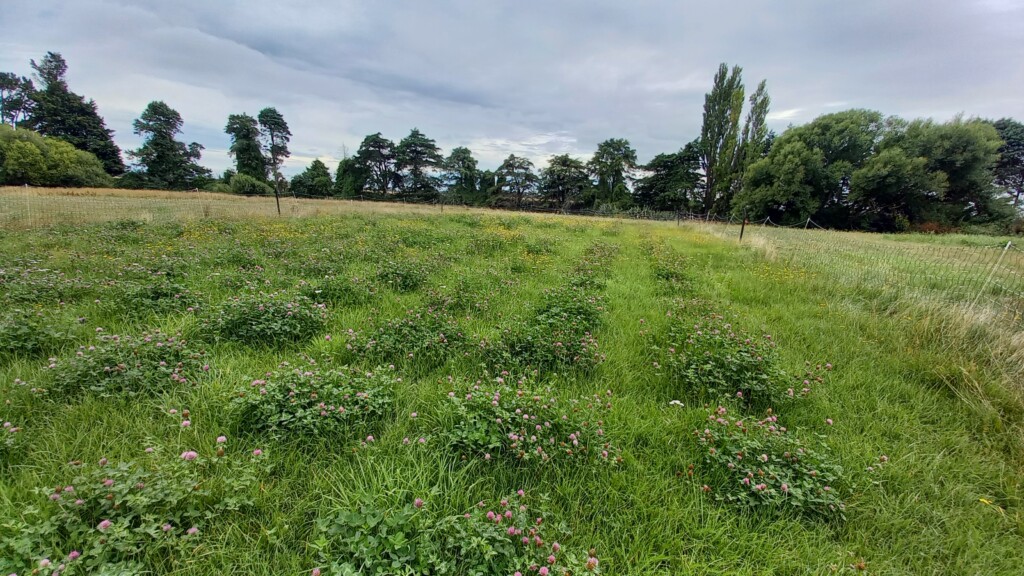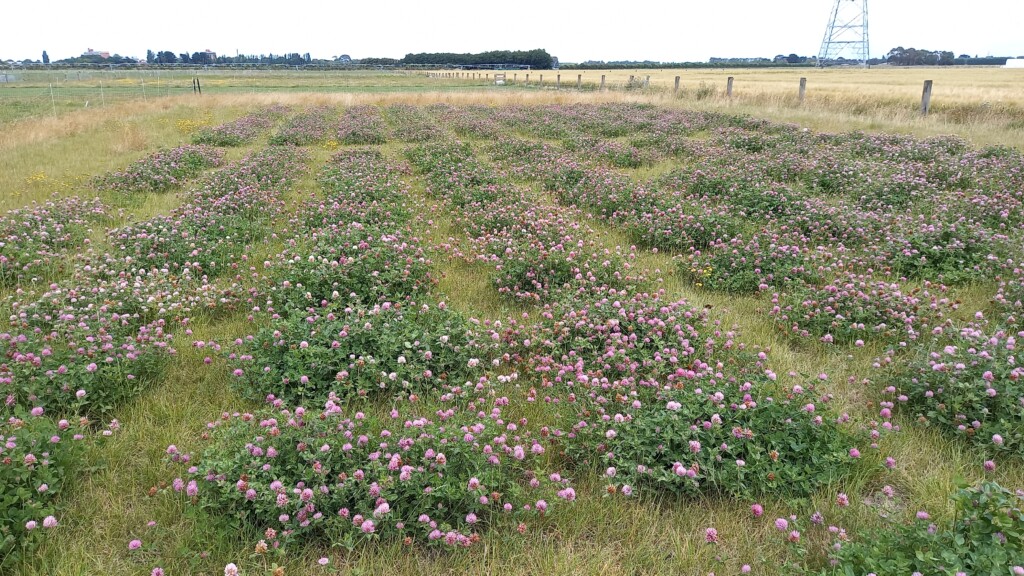As climate conditions continue to change and cause challenges for New Zealand farmers, there is a need for new clover varieties to be considered to help adapt to these changes. This is particularly true in dryer climates around the country. AgResearch Scientist, Angus Heslop is researching this as part of his PhD through Lincoln University, titled “Identification of key traits in Red Clover for persistence under changing climatic conditions sourced from a Germplasm Collection in New Zealand”.
This specific project, funded by the T.R. Ellett Agricultural Research Trust is extending information from current field trials by supporting DNA profiling/genotyping costs to enable investigation and development of optimal breeding strategies for red clover. “We are wanting to identify specific traits of interest within the germplasm which will be able to be incorporated into breeding programmes,” Angus explains. “Especially for dry climates this will allow farmers to use red clover as an additional tool to strengthen a pasture, particularly as we come into summer where red clover is usually more productive than white clover”.
The research is based around two cultivar families, namely the Grasslands Relish and Grasslands Colenso varieties. A selection of different individual plants (genotypes) from each cultivar were crossed initially with a diverse selection of germplasm ecotypes, which are a collection of individual plants from different habitats throughout the Mediterranean and into Central Asia. 50 separate individuals from the resulting offspring were then poly-crossed (a method of crossing where the female is known but the pollen may come from several males).
This generated 50 half-sib families, one from each individual from each cultivar background, and is a way to bring very diverse genetics into elite locally-adapted material. The half-sib families were planted out into two contrasting field-testing sites in Canterbury. One site is classified as a dryland site with stony soil and one is in a control environment with silt loam soil. Both sites were run as dryland and had two different grazing pressures of beef (dryland site) and sheep (control site).
Key agronomic traits of plant growth, plant density and leaf size have been measured. Other traits that are being measured include chlorophyll content, plant height, NDVI (Normalised Difference Vegetation Index, a measure used to quantify vegetation greenness useful in understanding plant health), plant survival, flowering, petiole length (the stalk that attaches the leaf to the plant stem) and leaf thickness. The wider research project has had populations in the ground at the two field sites for three years, with this summer (2024/2025) being the last before results start to be fully analysed.
This research seeks to understand the heritability of specific traits through the implementation of genomic prediction, including predicting how these traits may be passed on in the next generation.
Angus is currently in the last year of his PhD with the results expected to be published this year, so there is a lot to look forward to.
“The funding from the T.R. Ellett Trust has allowed us to dig deeper and explore more unanswered questions. Once the analysis is completed, I will be publishing these results this year which will give us a better understanding of the best ways to incorporate these traits into breeding programmes”.
| Genomic prediction is an alignment of genotype information (DNA profile) with phenotype data (the observed characteristics of the plant) and enables prediction of an individual’s trait performance based on its genotype. Determining the genotype of individuals using genotyping-by-sequencing (GBS) helps to understand it’s DNA, and this alongside its phenotypic data from the field trials and the development of a genomic selection prediction model is used to run predictive equations and compare breeding selection strategies for red clover. This allows a breeder to know the amount of genetic gain and the cost of using different methods, material, and selection pressures for particular traits. |

Dryland site – image courtesy of Angus Heslop.

Control site – image courtesy of Angus Heslop.
